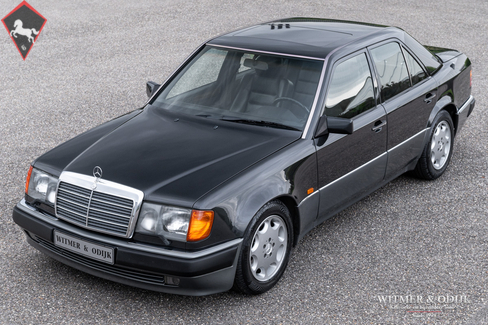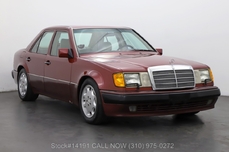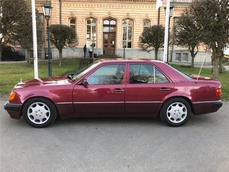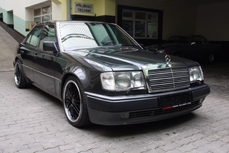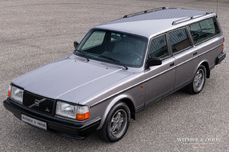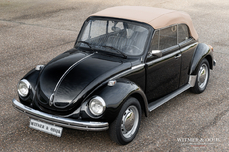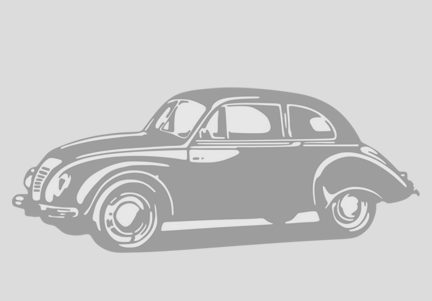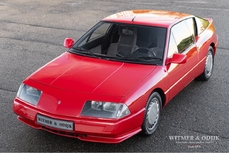Mercedes-Benz 500 w124 1992
General description :
Model historie en beschrijving:
De Mercedes 500E zou misschien wel in de Porsche rubriek geadverteerd moeten worden. De 500 E kwam tot stand in nauwe samenwerking met Porsche. Terwijl de technische afdeling volledig bezig was met de ontwikkeling van de nieuwe S-Klasse, gaf Mercedes-Benz Porsche in 1989 de opdracht om het W124-chassis opnieuw te ontwerpen zodat de 5,0 liter V8 die in de SL werd gebruikt erin zou passen, samen met de nodige veranderingen aan de ophanging en aandrijflijn. Eenmaal klaar bleek dat de verbrede schermen op drie plaatsen niet door de W124-assemblagelijn in Sindelfingen pasten. Daarom kreeg Porsche ook de opdracht om de auto te assembleren. Als neveneffect zorgde deze regeling voor werk in de Porsche-fabriek, aangezien het bedrijf op dat moment in een crisis verkeerde en de fabriekscapaciteit onderbenut was. Tijdens de productie leverde Mercedes-Benz onderdelen aan Porsche's "Reutter-Bau" -fabriek in Zuffenhausen (een stadsdeel van Stuttgart), waar het 500 E-chassis met de hand werd geassembleerd. Wanneer de carrosserie afgebouwd was, werd het per vrachtwagen naar de Mercedes-Benz-assemblagefabriek in Sindelfingen vervoerd om daar te worden gespoten. Zodra de lak droog was, werd het gelakte chassis teruggestuurd naar Porsche's "Rössle-Bau" in Zuffenhausen, waar de motor werd geplaatst en de auto werd voltooid. Voor de eindinspectie en aflevering werden de voertuigen opnieuw naar Sindelfingen vervoerd. Dit proces duurde maar liefst 18 dagen per auto. Gezien de niet geringe nieuwprijs en voor een leek het uiterlijk van een taxi die flink aan de anabolen was werden er slechts 10.000 exemplaren gebouwd. Dat ingetogen uiterlijk vond bijvoorbeeld Niki Lauda een van de grote voordelen, onopgemerkt kon hij er Formule 1 snelheden mee bereiken en overal parkeren. Hij zal zich er niet druk om hebben gemaakt, voor toekomstige en huidige eigenaren van een 500E is het wel van belang dat de auto regelmatig onderhoud kreeg. De bestuurder moest ook niet met de voet op de rem blijven staan na een flink stukje 'trappen' want kromme schijven zijn een aanslag op uw banksaldo, de remmen kwamen ook van Porsche. De enige Nederlandse eigenaar van deze 500E wist al het nodige van het belang van goed onderhoud. Hij wilde alleen een auto die altijd door de dealer werd onderhouden. Bij de auto aanwezig is een dik dossier met facturen en uiteraard het originele afgestempelde serviceboekje. Een auto als deze 500E moet natuurlijk aan alle voorwaarden voldoen die de liefhebber stelt, schadevrij, mooie lakkwaliteit, een foutloos interieur, onbeschadigde velgen en goed gedocumenteerd bijvoorbeeld. Deze 500E voldoet aan alle eisen, bovendien is ze ook nog eens redelijk geprijsd. Een 500E was standaard uiteraard rijk uitgerust, zo zijn er bijvoorbeeld Recaro sportstoelen en cruise control, dit exemplaar heeft als extra een elektrisch schuif/kanteldak, stoelverwarming, een originele Becker Mexico radio/cassette speler, cruise control en elektrische stoelen met geheugen. Desgewenst voorzien wij de auto van de afgebeelde AMG velgen. Wij leveren deze 500E inclusief nieuwe APK, garantie en onderhoudsbeurt.
Kilometerstand90.308 Vermogen326 pk
Bouwjaar1992 Cilinderinhoud4973 cc
Kleur exterieurZwart metallic Motor configuratieV8 met injectie
Kleur interieurZwart Motor nummerMatching
BekledingVolledig in leer Velgen16 inch MB lichtmetaal
0 - 100 km/u6,1 sec BandenContinental Ultra Contact
Topsnelheid250 km/u Productieaantallen 10479
ChassisnummerWDB1240361B668737 OverigTop exemplaar!
1992 Mercedes-Benz 500 w124 is listed for sale on ClassicDigest in Warmond by Witmer & Odijk for €72950.
Car Facts
Car type : Car Make : Mercedes-Benz Model : 500 w124 Engine size : 0.0 Model Year : 1992 Location : Wasbeeklaan 3A, 2361 HG Warmond, Netherlands Vehicle Registration : Undefined
72950 €
People who viewed this Mercedes-Benz 500 w124 also viewed similar Mercedes-Benz listed at ClassicDigest
Other cars listed for sale by this dealer
About Mercedes-Benz
In the annals of automotive history, the journey of Mercedes-Benz is a tale that unfolds with the ingenuity of its founding pioneers. In the year 1886, Karl Benz crafted the Benz Patent Motorwagen, a creation that would go down in history as the world's inaugural automobile. Unbeknownst to him, this moment marked the genesis of what would evolve into the most illustrious premium car manufacturer globally. The financial underpinning of this pioneering venture, interestingly, was provided by Karl Benz's wife, Bertha Benz, demonstrating a remarkable partnership that would set the tone for Mercedes-Benz's legacy.A parallel narrative emerged not far away, as Daimler-Motoren-Gesellschaft, founded by Gottlieb Daimler and Wilhelm Maybach, entered the scene. In 1901, they unveiled their automobile under the now-famous moniker "Mercedes," meaning "godsend" in Spanish. This name was bestowed upon the car at the behest of Emil Jellinek's daughter, the distributor for Daimler-Motoren-Gesellschaft. The wheels of innovation were set in motion.
Fast forward to 1926, a pivotal year that witnessed the merger of Daimler with Benz & Cie., culminating in the birth of Daimler-Benz. The amalgamation saw the adoption of "Mercedes-Benz" as the distinguished trademark for their automobiles, fusing the legacies of two visionary entities into one.
Contrary to perceptions of conservatism, the trajectory of Daimler-Benz unfolds as a chronicle of industry firsts. From the introduction of the honeycomb radiator to the float carburetor, and the pioneering implementation of four-wheel brakes in 1924, Daimler-Benz consistently pushed the boundaries of automotive innovation. The diesel-powered Mercedes-Benz 260 D in 1936 marked the inception of diesel engines in passenger cars. The iconic Mercedes-Benz 300SL Gullwing made history as the first car with direct fuel injection, albeit the Gutbrod's tiny 2-stroke engine can claim precedence.
Safety innovations became a hallmark, with Béla Barényi's patented safety cell design in the "Ponton"-models in 1951, featuring front and rear crumple zones. The W116 450SEL 6.9 saw the introduction of the Anti-Lock Brake system (ABS), another pioneering safety feature. From the first production airbags and beyond, the legacy of "firsts" continued to be etched into the fabric of Daimler-Benz.
Over its centennial journey, Mercedes-Benz has not merely produced cars but has sculpted automotive icons. The SSKL, 710 SSK Trossi Roadster, 770K Grosser, 540K Spezial Roadster, 300SL Gullwing, w100 600 Pullman, w111 280SE 3.5 Flachkühler, w113 230SL Pagoda, w109 300 SEL 6.3, and w201 2.3-16 Cosworth stand testament to the brand's commitment to engineering excellence.
The roaring Silver Arrows, or "Silberpfeile," including the W 25, W 125, W154, W165, and W196, created a legacy of dominance on the racetrack. These machines were not merely cars; they were expressions of precision, speed, and an indomitable spirit that left their competitors in the dust.
As Mercedes-Benz marches into the future, it does so not just as an automaker but as a custodian of a legacy, a torchbearer of innovation, and a beacon of automotive excellence. The road ahead is sure to witness the continued fusion of cutting-edge technology, timeless design, and an unwavering commitment to setting new standards in the world of automobiles.
One luminary figure who left an indelible mark was Béla Barényi, often heralded as the "father of passive safety" for his pioneering work in safety engineering. His patented safety cell design, featuring front and rear crumple zones, became a hallmark of Mercedes-Benz's commitment to occupant safety, setting new standards that reverberated throughout the automotive world.
Moving through the chronicles, the collaborative genius of Wilhelm Maybach, alongside Gottlieb Daimler, laid the foundation for Daimler-Motoren-Gesellschaft. Their innovations not only birthed the first Mercedes but established a culture of relentless pursuit of technological excellence that remains integral to Mercedes-Benz's DNA.
In the post-merger era of 1926, Ferdinand Porsche emerged as a prominent figure within Mercedes-Benz. His work on the Mercedes-Benz S-Type, a supercharged race car, garnered acclaim and set the stage for a legacy that extended far beyond the marque. Porsche's impact would later extend to his eponymous company, but his influence at Mercedes-Benz during those formative years was pivotal.
As the 20th century progressed, the legendary Rudolf Uhlenhaut emerged as a key figure. Uhlenhaut, an accomplished engineer and the driving force behind the iconic Silver Arrows, played a crucial role in Mercedes-Benz's dominance in motorsports. His engineering prowess and attention to detail were instrumental in creating some of the most formidable racing cars of the era.
In the latter half of the century, figures like Bruno Sacco, the head of design at Mercedes-Benz from 1975 to 1999, left an indelible imprint on the brand's aesthetic identity. Sacco's design philosophy, characterized by clean lines and timeless elegance, shaped iconic models like the W126 S-Class and the W201 190E, solidifying Mercedes-Benz's reputation for luxury and sophistication.
The narrative would be incomplete without acknowledging the contributions of engineers like Hans Scherenberg, whose leadership in the 1970s ushered in a new era of technological innovation at Mercedes-Benz. Scherenberg's tenure saw the development of groundbreaking technologies, including the Anti-Lock Brake system (ABS) and the introduction of airbags in production cars.
